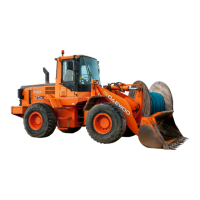022-00028AE Operation and Maintenance Manual Copyright 2003 Daewoo
Daewoo reserves the right to improve our products in a continuing process to provide the best possible
product to the market place. These improvements can be implemented at any time with no obligation to
change materials on previously sold products. It is recommended that consumers periodically contact their
distributors for recent documentation on purchased equipment.
This documentation may include attachments and optional equipment that is not available in your
machine’s package. Please call your distributor for additional items that you may require.
Illustrations used throughout this manual are used only as a representation of the actual piece of
equipment, and may vary from the actual item.
Operation and Maintenance Manual
022-00028AE
S/N 1001 and Up (Tier I & II)
February 2003
Mega 200-V
Mega 200-VTC



